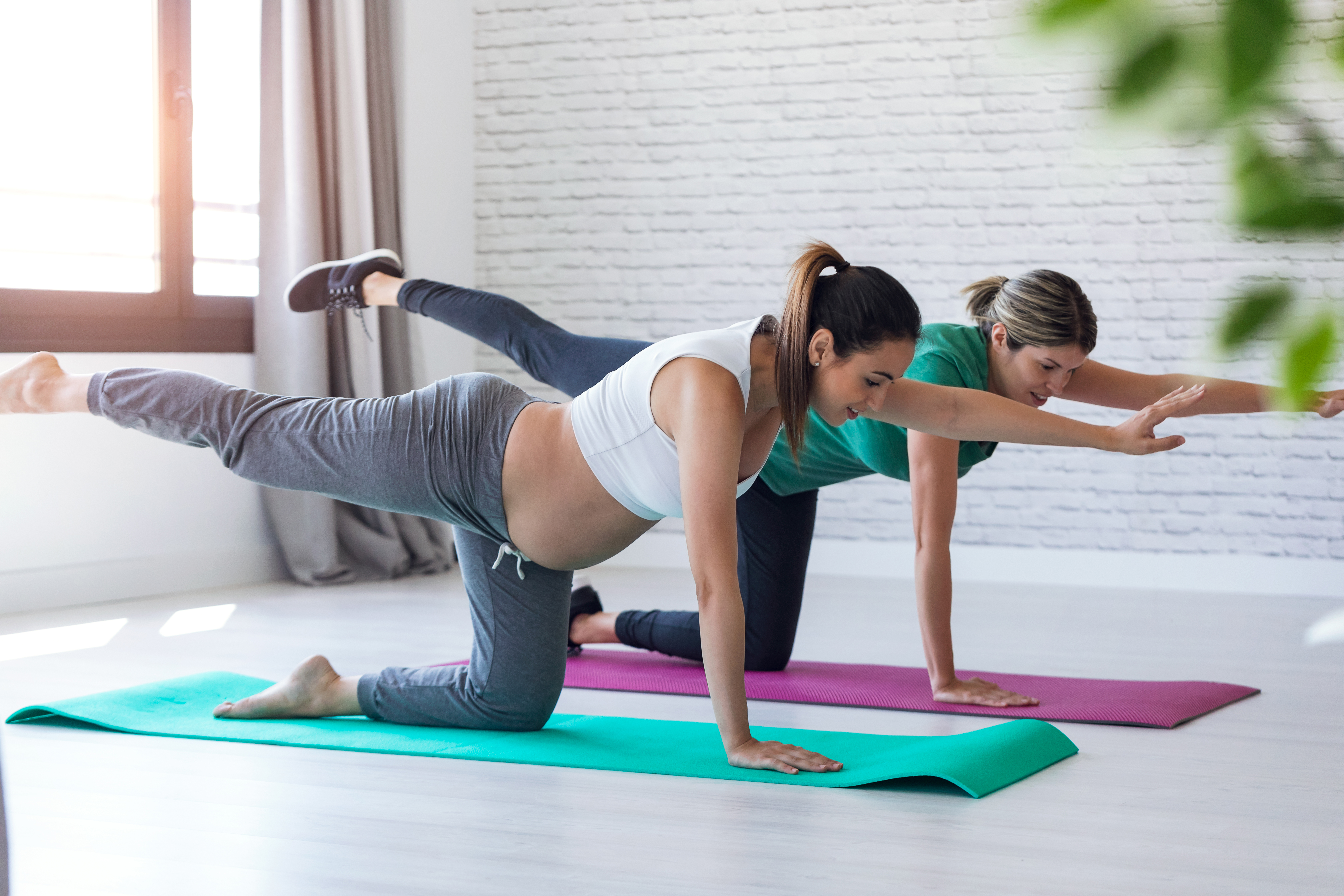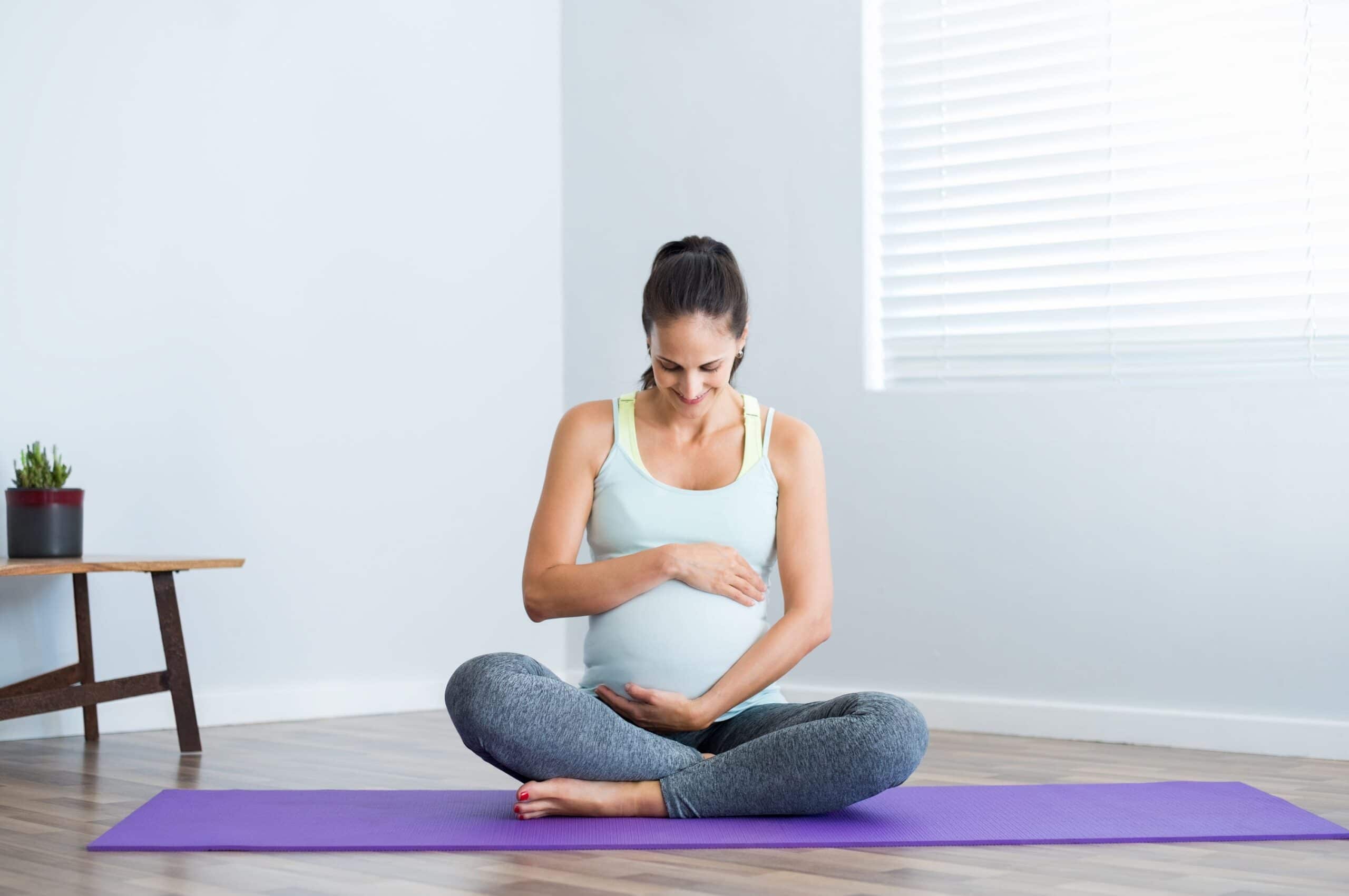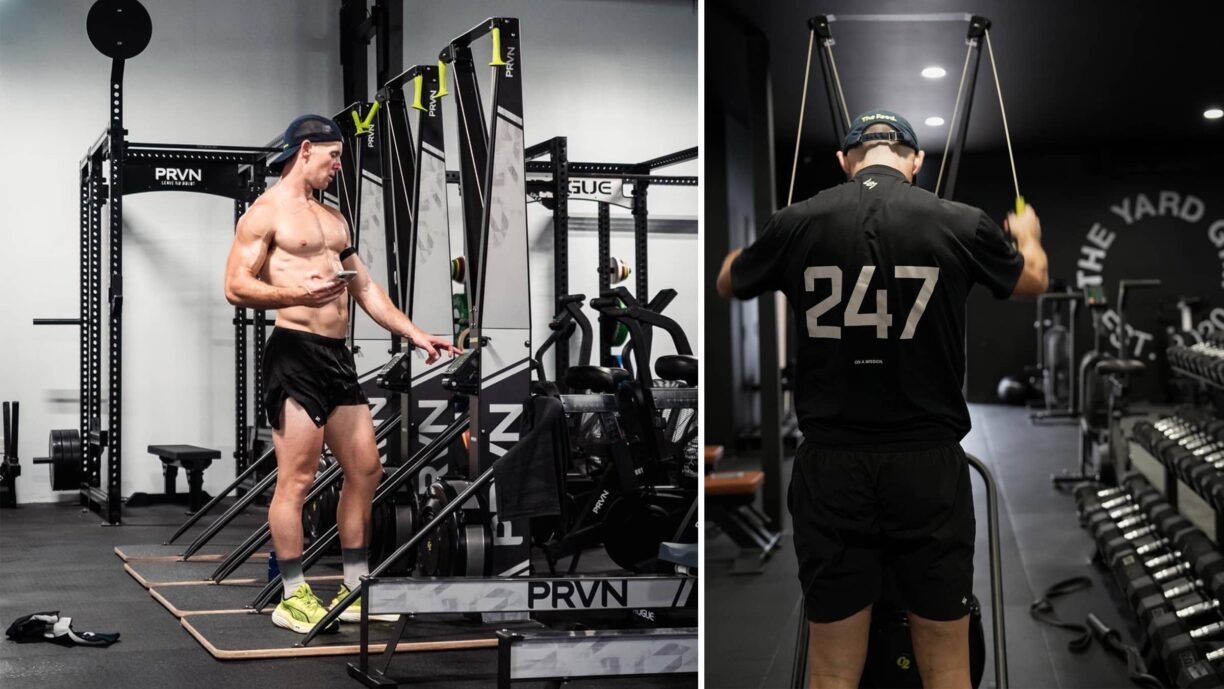It’s important to keep active during pregnancy, generally speaking, but the current Covid-19 situation has made that more difficult for everyone. What can mums-to-be do to keep fit safely at home?
We asked experts in different disciplines about what pregnant women who are isolating or social distancing need to know.
Remember, always make sure you’ve been given the go ahead from your GP or midwife before undertaking any new exercise while pregnant.
Yoga

Prenatal yoga – and videos are aplenty online – can help keep the body strong and mobile, which yoga instructor Hannah Barrett says will help both throughout pregnancy and for birth. As it’s low impact, it’s especially suitable for mums-to-be and can be modified to suit your level and needs.
“The mindfulness element of a yoga practice is incredible to help improve sleep, reduce stress and anxiety and to promote a connection and bond with your unborn baby,” says Barrett. “I fell in love with yoga during my first pregnancy and found it not only gave me so much physical strength, but mentally helped me a huge amount. I felt so much more in control of the birth.
“The most important thing to remember is to move mindfully, cultivating an inner awareness of how your body is feeling and the changes within. If anything causes pain or doesn’t feel right, ease out of the pose or stop.”
Aside from not lying on your front or back, she advises against holding your breath or doing vigorous pumping breaths. Due to the extra hormone relaxin in your body during pregnancy, Barrett says when stretching to “come back to about 70% of your full range to protect your joint and ligaments”.
She adds: “Transition slowly through poses, avoid jumping and deep twists (like a revolved side angle pose or half lord of the fish pose). For poses where you would be lying on your belly (for example, cobra), modify with a seated pose like a seated heart opener.”
Don’t do anything where there’s a risk of falling – like inversions – even if you could do them pre-pregnancy.
Find Barrett’s Strength Through Yoga e-guide at hannahbarrettyoga.com.
Pilates

This low-impact exercise aims to strengthen muscles, improve posture and alignment. Make sure to find pregnancy-specific Pilates classes online, if you’re working out at home.
Third Space pregnancy Pilates instructor Liz Higginbottom says: “Pilates is great for pregnant women because it brings an awareness to breath, pelvic floor and the deeper core, which are all essential for their changing body and practice.
“There is also a large focus on finding optimal posture and spinal alignment, which tend to shift during pregnancy. While there’s effort, it’s low impact and therefore safer for the pregnant body.”
During pregnancy, like in yoga, you’ll need to ensure you don’t lie on your back or front – which can be uncomfortable and potentially harmful. “Any exercises in supine (on your back) will need to be modified by propping the upper body into a more upright angle.” A bolster is ideal for giving you more support, but a couple of good pillows will work too.
“Exercises prone (on your front) will have to be brought to hands and knees or standing,” Higginbottom adds.
She advises avoiding any exercises that include rolling up and down the spine. For example: “Roll up, rolling like a ball, open leg rocker and teaser”.
Weights

If you’ve got some hand weights at home, or can order them in (or use some tins from the cupboard!), resistance training is great during pregnancy – and you’ll need that muscle tone when carrying around a young child.
PT and CEO of Motivate PT and Reset LDN, Kira Mahal says: “Toning the muscles in your abdominal area and back can help prevent lower back pain, and help keep your weight in check during your pregnancy.”
She says in the first trimester, women can continue their regular weight training but that it’s important to really focus on technique. “We’d advise against lifting anything heavier and avoid using momentum to lift weights up,” she says.
“In your second trimester, it will be safer to be seated when lifting weights. If you do decide to stand, make sure you have good posture. Your bump alters your sense of gravity, so make sure you aren’t arching your back to compensate,” she adds. “Opt for lighter weights and do more reps.”
In the third trimester, Mahal suggests using resistance bands instead of weights. “Towards the end of your pregnancy, make sure you aren’t lifting weights above your head and try not to lift them from the floor.”
She says weighted squats, bicep curls with light weights and a seated row are good exercises in pregnancy, but to steer clear of dead lifts, clean and press and upright rows.
“Avoid lifting heavy weights, general circuit training which involves fast movements, and exercises that use heavy barbells behind your neck,” she adds.





